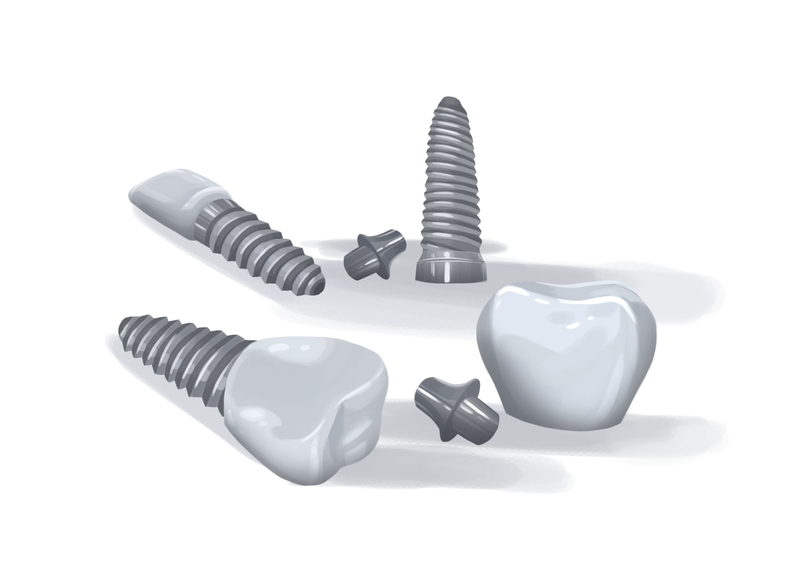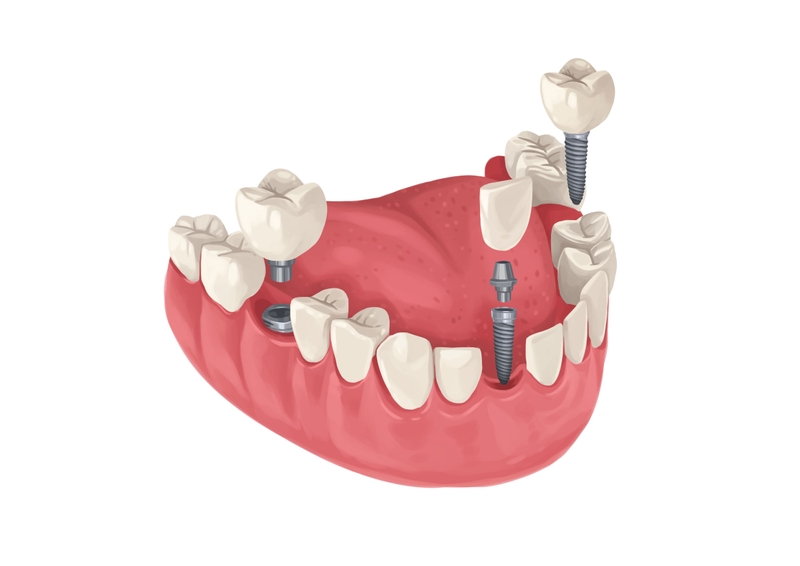- Dental implants have been around since ancient times. Bamboo, precious metals, ivory and rare gemstones were the materials used in the first dental implants.
- The first implants were not very successful because they could not bond with the human body. Titanium, which can fully integrate with bone, was the first truly successful implant material.
- The technology of dental implants is constantly evolving. Modern trends are robot-assisted surgery, 3D CT scans and printing and the use of materials to eliminate bacterial biofilms.
You're one appointment away from a smile transformation. Use Authority Dental to book skilled dental implant dentists. It's simple, fast and trustworthy.
Are you curious about the history of dental implants? Here's everything you need to know.
The history of dental implants: a timeline

Picture by Authority Dental under CC 2.0 license
Dental implants have a long history. From bamboo to titanium, their evolution has been interesting to follow over the years.
Ancient history
It might surprise you to find out that dental implants have been around for thousands of years. In fact, the first “dental implant” was used in China around 600 A.D. The Chinese carved bamboo pegs, which were then fixed on the jaw and served as replacement teeth.
About 2000 years later in 1000 B.C., the Egyptians did a similar thing, but carved the pegs from precious metals and placed them in the bone. This is when the first metal implant was recorded. Archaeologists have also found similar “pegs” made of ivory and rare gems such as jade.
2,000 years later, the Egyptians adopted a similar practice of carving precious metals and pegging them onto the jawbone. The first recorded case of a metal implant was found in an Egyptian king from 1,000 B.C. Archaeologists have also found numerous skulls with artificial or transplanted teeth made from elephant ivory or rare gems such as jade.
Early modern period
The problem with implants prior to modern times was their inability to integrate with the human body. The body often rejects foreign elements, and dental implants were no exception. In the years from 1500-1800, European scientists tried blends of gold and other metal alloys, as well as silver and porcelain to fabricate dental implants, but to no avail.
On the darker side of history during this time, teeth were even taken from cadavers or the underprivileged and transplanted into the upper-class patients who had missing teeth.
Modern times
Dental implant experimentation carried into the 1900s. Dr. E. J. Greenfield tried using 24-karat gold in the year 1913, but still had no success. It wasn’t until two brothers, Drs. Alvin and Moses Strock, used Vitallium that we had any success with dental implants. Vitallium had been used in hip bone implants before being tested in dentistry. The Vitallium implants lasted much longer than previous attempts, so the Strock brothers are credited with the first successful dental implant placement.
Harry Lee, DMD, explains: "The history of dental implants is a fascinating journey, and I often share it with curious patients because it emphasizes how far we’ve come. For centuries, people were trying to put anything in the jaw—bamboo pegs, precious metals, even transplanted human teeth—but the body always rejected them."
"The true breakthrough, the accident that paved the way for modern dentistry, came in 1952 when Swedish researcher Dr. Per-Ingvar Branemark discovered the phenomenon of osseointegration," he emphasizes.
A short time later, in 1952, Dr. Per-Ingvar Branemark began studying bone healing and regeneration after placing a titanium implant in a rabbit femur. When he went to remove the titanium, he noticed it had fully integrated with the bone and could not be removed. His accidental discovery led to the modern-day dental implant.
Dr. Branemark placed his first titanium implants in a human patient in 1965. The procedure was a success, and he went on to publish his research. His research was not widely accepted until 1982. Once the scientific community accepted it, more dentists began placing dental implants in their patients.
Dr. Branemark didn’t stop there. In the 1990s, he introduced zygomatic dental implants that could be placed in the zygomatic bones. This was a beneficial advancement for patients who had significant bone loss and required dental implant placement in the zygomatic bone instead of the maxilla.
What the future brings

Picture by Authority Dental under CC 2.0 license
We continue to see improvements and advancements in dental implants. New technology is constantly changing what can be done and how we plan treatment and place implants. Robot-assisted surgery is now available, as well as 3D CT scans and 3D printing. Materials that eliminate bacterial biofilms have also been used to aid in the success of dental implants. Right now, dental implants have a 97% success rate.
As the future unfolds, we will see dental implants become more affordable and an option for patients who are not currently ideal candidates due to bone level or overall health. Several technologies currently under study would enable bone development and implant placement.

FAQ
Where do teeth implants come from?
Dental implants originally stemmed from treatment seen in ancient China and Egypt. Archeologists have discovered numerous skeletal remains that showed signs of objects being implanted into the jawbone to serve as teeth.
Who invented dental implants?
While the use of implant-like objects dates back thousands of years, Dr. Per-Ingvar Branemark is credited with the first use of titanium as a dental implant as we know them today. He placed the first implants in a human in 1965.
When did dentists start using implants?
Even though Dr. P. Branemark placed the first titanium implant in 1965, he was ridiculed by other dentists until the early 80s, when the science research community finally accepted his research. After that, more and more dentists began using implants to replace missing teeth.
How did Dr. P. Brånemark change implant history?
Dr. Branemark discovered osseointegration, the process by which a titanium dental implant integrates with bone. The two fuse, making the implant firmly seated in the bone and able to withstand biting pressure.
Harry Lee, DMD
Branemark was studying bone healing in rabbits using titanium chambers. When he tried to remove the chambers, he found they had completely fused to the bone. That accidental discovery—that titanium is uniquely compatible with human bone and is not rejected—is the foundation of every modern implant we place today. It turned implantology from a guessing game into a predictable, scientifically verifiable procedure with success rates consistently above 97%.